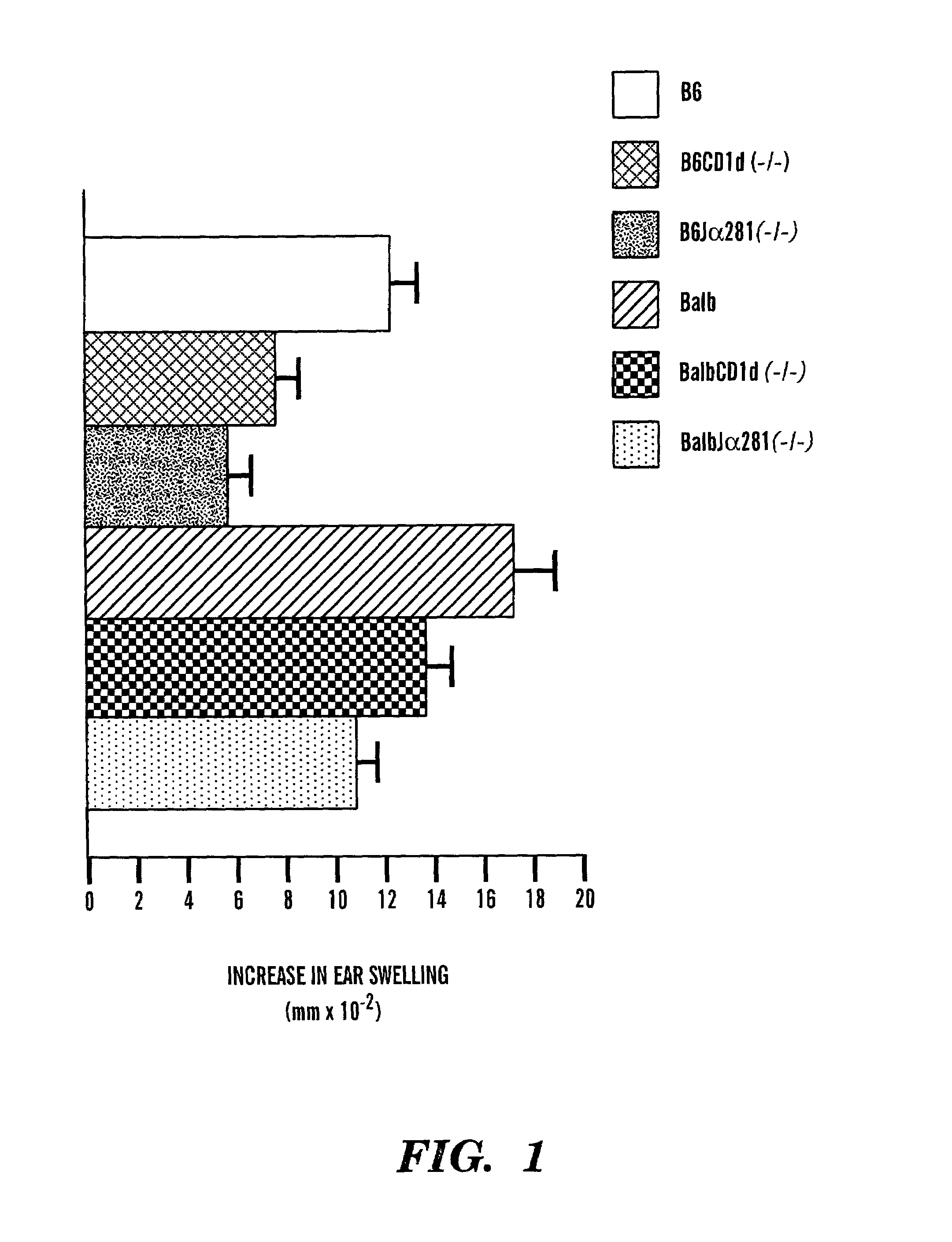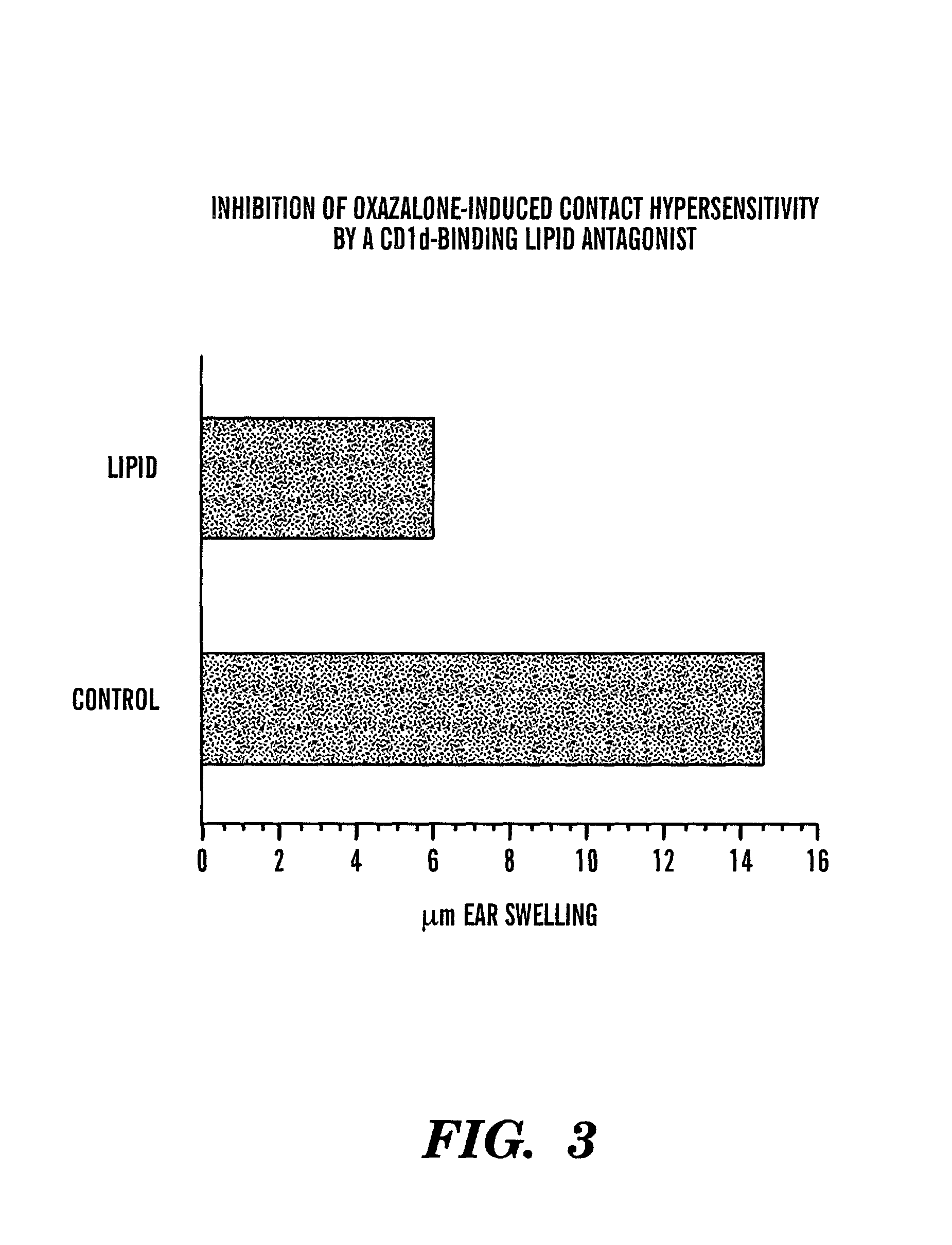Method of attenuating reactions to skin irritants
a technology of skin irritants and attenuating reactions, which is applied in the direction of phosphorous compound active ingredients, immunological disorders, antibiotics, etc., can solve the problems of allergic contact dermatitis, adverse reaction, and development of lichenification and infiltration of eczema, so as to prevent or treat skin sensitization
- Summary
- Abstract
- Description
- Claims
- Application Information
AI Technical Summary
Benefits of technology
Problems solved by technology
Method used
Image
Examples
examples
Animals
[0102]8-12 week old female C57B1 / 6 mice were purchased from Taconic Farms, Inc. (Germantown, N.Y.). The CD1d-null allele (generated in a 129×C57B1 / 6 founder (25) (26) was backcrossed 7 generations into the C57B1 / 6 strain. (15) Homozygous CD1d deficient mice were obtained from littermate pairings and used to generate heterozygote CD1d deficient and wild type controls. Breeding pairs of mice deficient for CD1d on the BALB / c background were purchased from Jackson Labs (Bar Harbor, Me.). The C57B1 / 6 and BALB / c J 281 null mice were established by specific deletion of the J 281 gene segment (27) (28). All mouse experiments were approved and conducted under IACUC guidelines.
Reagents
[0103]Contact hapten, 4-ethoxymethylene-2-phenyl-2-phenyl-2-oxazolin-5-one (oxazolone) was purchased from SIGMA, GalCer [(2S, 3S, 4R)-1-O-(-D-galactopyranosyl)-2-(N-hexacosanoylamino)-1,3,4-octadecanetriol was kindly provided by Pharmaceutical Research Laboratories, Kirin Brewery, Gunma, Japan, and CD1d-b...
PUM
| Property | Measurement | Unit |
|---|---|---|
| Fraction | aaaaa | aaaaa |
| Composition | aaaaa | aaaaa |
Abstract
Description
Claims
Application Information
 Login to View More
Login to View More - R&D
- Intellectual Property
- Life Sciences
- Materials
- Tech Scout
- Unparalleled Data Quality
- Higher Quality Content
- 60% Fewer Hallucinations
Browse by: Latest US Patents, China's latest patents, Technical Efficacy Thesaurus, Application Domain, Technology Topic, Popular Technical Reports.
© 2025 PatSnap. All rights reserved.Legal|Privacy policy|Modern Slavery Act Transparency Statement|Sitemap|About US| Contact US: help@patsnap.com



